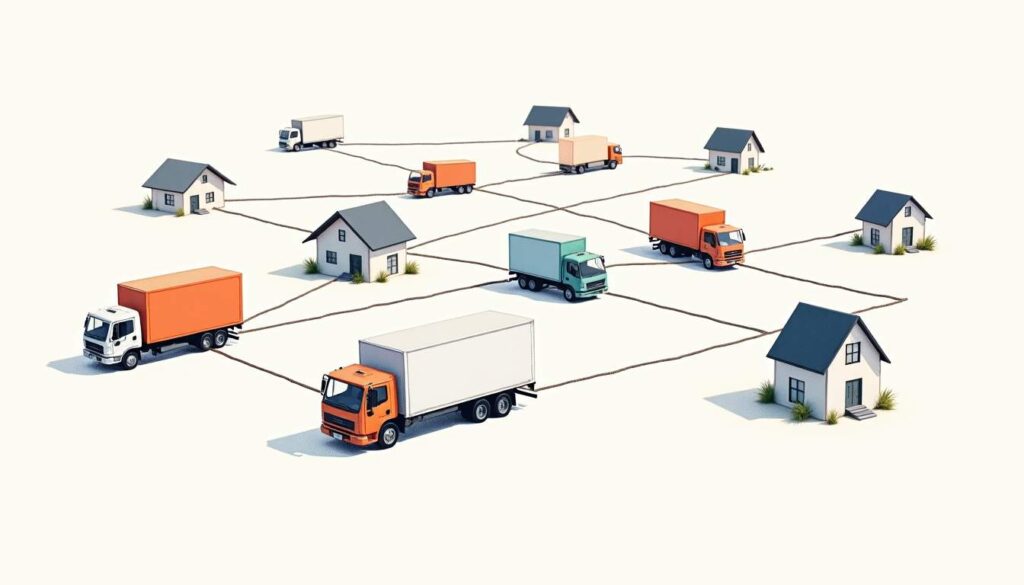In the moving industry, building lasting customer relationships is more than just good business—it’s essential for long-term success. With approximately 35 million Americans moving each year, competition among moving companies is fierce. Yet, only a select few manage to foster lifelong loyalty among their clients. What sets these companies apart? Understanding the factors behind customer retention and satisfaction reveals why some moving companies thrive while others struggle to keep customers coming back. According to DemandSage, a mere 5% increase in customer retention can boost profits by 25% to 95%, highlighting the critical importance of nurturing ongoing relationships.
Exceptional Communication: The Cornerstone of Trust
One of the most significant reasons customers either stick with or abandon a moving company is communication. Studies show that 72% of customers switch to a competitor after just one bad experience, often rooted in poor communication. In the moving business, where logistics can be complex and stressful, clear, consistent communication is vital.
Unfortunately, 60% of negative moving company reviews mention poor communication as a key complaint. This points to a widespread issue that many companies fail to address. Customers want to feel informed and reassured throughout the entire moving process—from the initial quote to the final delivery.
Companies that implement proper digital communication strategies report 50% higher customer retention rates, according to research from WeMove.ai. Utilizing modern tools such as CRM systems helps moving companies keep all team members aligned and ensures customers don’t have to repeat themselves. This seamless internal communication translates directly into a better customer experience.
Leveraging Technology to Enhance Communication
More than 74% of users say their CRM improves access to customer data, making it easier for teams to provide personalized service. Nearly half of CRM users agree that these systems bolster both customer retention and satisfaction. For moving companies, this means having all customer information at their fingertips, enabling quick responses and tailored interactions.
Moreover, 77% of consumers expect brands’ internal teams to communicate well to avoid repeatedly asking for the same information. Meeting this expectation builds trust and reduces frustration, which are key to fostering loyalty.
In addition to CRM systems, many companies are now embracing chatbots and AI-driven communication tools to enhance customer interactions. These technologies can provide instant responses to common inquiries, ensuring that customers feel heard and valued even outside of business hours. By integrating these tools, moving companies can offer a more responsive service that caters to the needs of busy customers who may not have the time to engage in lengthy phone calls or emails.
Furthermore, proactive communication strategies, such as sending regular updates via email or text message, can significantly enhance the customer experience. For instance, notifying customers about the status of their move, any potential delays, or even confirming appointments can help alleviate anxiety and build a sense of partnership. This level of engagement not only keeps customers informed but also demonstrates a commitment to transparency, which is crucial in establishing long-term trust and satisfaction.
Personalized Service: Treating Customers as Individuals
In an industry where many moves are similar in scope, personalization can be a game changer. Customers want to feel understood and valued, not just like another transaction. Research indicates that 68% of customers will spend more with companies that treat them as individuals and understand their unique needs.
Moving companies that take the time to customize their services—whether through flexible scheduling, tailored packing options, or eco-friendly choices—stand out from the competition. For example, 70% of consumers prefer green logistics, signaling a growing demand for sustainable moving solutions.
Additionally, the top 10% of most loyal customers spend three times more per purchase than the other 90%, emphasizing the financial benefits of cultivating a dedicated customer base. By focusing on personalized experiences, moving companies can increase both customer satisfaction and revenue.
Understanding Customer Preferences and Pain Points
Most moves are local, with over 80% occurring within the same state, and the average residential move taking about nine hours. Yet, despite these commonalities, each move presents unique challenges. Offering services like contactless or virtual estimates, which over half of moving companies now provide post-pandemic, can improve safety and convenience, meeting evolving customer expectations.
Moreover, nearly 42% of consumers prefer to schedule moves during weekdays to avoid weekend surge pricing, a detail that companies attentive to customer preferences can leverage to enhance satisfaction and loyalty.
Follow-Up and Aftercare: The Missing Link for Many Movers
One of the most overlooked aspects of customer retention in the moving industry is follow-up after the move is complete. Shockingly, 80% of movers never follow up with customers post-move, missing valuable opportunities for repeat business and referrals.
Following up shows customers that their satisfaction matters beyond the transaction. It also opens the door for feedback, which can be used to improve services and address any lingering issues. This simple step can transform a one-time customer into a lifelong advocate.
Furthermore, 91% of customers read online reviews before choosing a mover. Positive follow-up interactions often encourage satisfied customers to leave glowing reviews, which in turn attract new business. Conversely, unresolved complaints can lead to negative reviews that damage reputation.
Building Loyalty Through Consistent Engagement
Companies that maintain contact with customers—whether through personalized emails, loyalty programs, or special offers—create a sense of community and trust. This ongoing engagement helps ensure that when customers move again, they think first of the company that cared enough to stay in touch.
Given that 65% of people move to upgrade their living situation, there is a natural opportunity for repeat business as customers’ needs evolve. Moving companies that recognize and act on this can secure a steady stream of loyal clients.
Cost Efficiency and Customer Retention: A Strategic Advantage
Retaining customers is not only good for relationships but also for the bottom line. It costs 6 to 7 times more to acquire a new customer than to retain an existing one, according to Zippia. This stark difference makes investing in retention strategies a smart financial decision.
Moreover, companies generate 65% of their business from existing customers, underscoring the value of nurturing ongoing relationships. Loyal customers tend to spend more and are less price-sensitive, providing a more stable revenue base.
In an industry where the average household move costs between $1,000 and $3,000, and interstate moves can range from $2,300 to $5,700, maximizing customer lifetime value is crucial. Offering comprehensive services, including packing, storage, and transportation, can further enhance customer satisfaction and retention, though less than 10% of companies currently provide fully integrated end-to-end solutions.
Investing in Customer Experience Pays Dividends
With customer satisfaction scores averaging around 85%, there is room for improvement that can translate directly into increased loyalty and profitability. Companies that prioritize seamless experiences, clear communication, and personalized service are more likely to see these benefits.
Additionally, as 81% of customers try to solve problems on their own before reaching out to service representatives, providing accessible self-service options and clear information can reduce friction and improve perceptions of the brand.
Conclusion: The Path to Lifelong Customer Relationships
Building lifelong relationships in the moving industry requires a combination of clear communication, personalized service, diligent follow-up, and strategic investment in customer retention. Companies that excel in these areas not only improve customer satisfaction but also enjoy significant financial rewards, as even a small increase in retention can dramatically boost profits.

By embracing modern technology, understanding customer preferences, and committing to ongoing engagement, moving companies can differentiate themselves in a crowded market. The result is a loyal customer base that returns time and again, providing steady revenue and positive word-of-mouth referrals.
For moving companies looking to thrive in today’s competitive landscape, the message is clear: invest in your customers beyond the move, communicate effectively, and treat each client as an individual. Those who do will build relationships that last a lifetime.
Learn more about the impact of customer retention and how to implement effective strategies at DemandSage and explore how digital communication can transform your business with insights from WeMove.ai.




